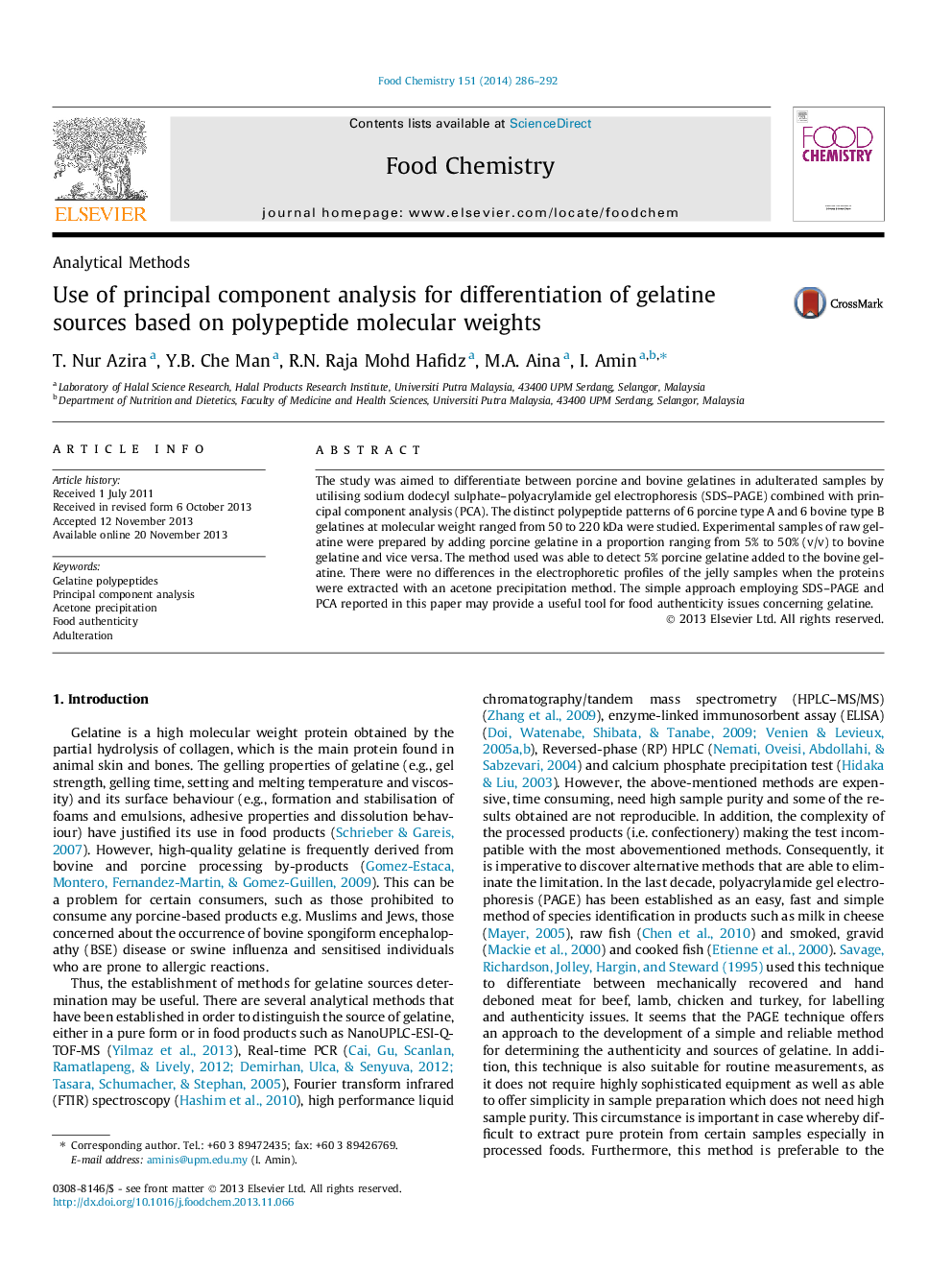| Article ID | Journal | Published Year | Pages | File Type |
|---|---|---|---|---|
| 1185264 | Food Chemistry | 2014 | 7 Pages |
•Method developed for analysing gelatine polypeptides in jellies.•Gelatine extraction with acetone exhibited clear polypeptide profiles on SDS–PAGE.•The integrated method of SDS–PAGE and PCA was demonstrated.•The simple approach may provide a useful tool for gelatine authenticity issues.
The study was aimed to differentiate between porcine and bovine gelatines in adulterated samples by utilising sodium dodecyl sulphate–polyacrylamide gel electrophoresis (SDS–PAGE) combined with principal component analysis (PCA). The distinct polypeptide patterns of 6 porcine type A and 6 bovine type B gelatines at molecular weight ranged from 50 to 220 kDa were studied. Experimental samples of raw gelatine were prepared by adding porcine gelatine in a proportion ranging from 5% to 50% (v/v) to bovine gelatine and vice versa. The method used was able to detect 5% porcine gelatine added to the bovine gelatine. There were no differences in the electrophoretic profiles of the jelly samples when the proteins were extracted with an acetone precipitation method. The simple approach employing SDS–PAGE and PCA reported in this paper may provide a useful tool for food authenticity issues concerning gelatine.
